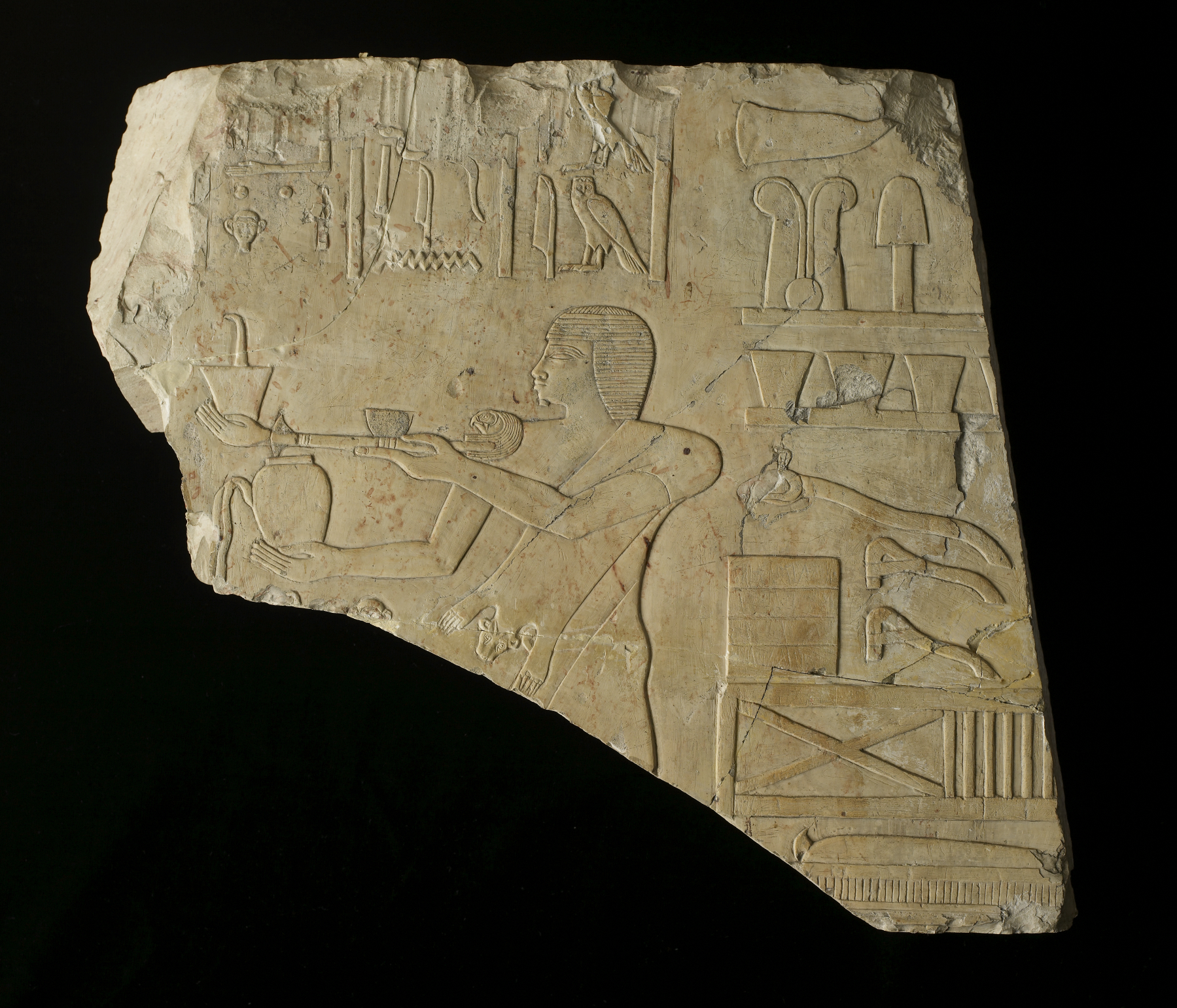Relief Fragment Showing a Priest with an Incense Burner
(Ancient Egypt and Nubia )
A mortuary priest, traditionally clothed in animal skin and long kilt, performs the "Opening of the Mouth" ritual, an essential part of the funeral ceremony in which the mummy is restored to life. Behind the priest is a table with special tools for the rites. He makes an offering and burns incense before the upright mummy (missing). This finely sculpted fragment comes from the tomb of the vizier Nes-pa-ka-shuty, a government official whose power was second only to that of the king (TT 312). It demonstrates the elegant style of the 26th Dynasty.
Provenance
Provenance (from the French provenir, 'to come from/forth') is the chronology of the ownership, custody, or location of a historical object. Learn more about provenance at the Walters.
Dikran Kelekian, New York and Paris [date and mode of acquisition unknown]; Henry Walters, Baltimore, 1929, by purchase; Walters Art Museum, 1931, by bequest.
Exhibitions
| 2013-2014 | Egypt’s Mysterious Book of the Faiyum. The Walters Art Museum, Baltimore. |
| 2008 | Faces of Ancient Arabia: The Giraud and Carolyn Foster Collection of South Arabian Art. The Walters Art Museum, Baltimore. |
Conservation
| Date | Description | Narrative |
|---|---|---|
| 11/27/1996 | Treatment | cleaned; loss compensation; re-housed; stabilized |
| 8/6/1998 | Examination | survey |
| 1/10/2001 | Treatment | repaired |
| 1/10/2001 | Examination | other |
Geographies
Egypt, Western Thebes, Tomb of Nes-pa-ka-shuty (TT 312) (Place of Origin)
Measurements
H: 13 3/16 x W: 14 in. (33.5 x 35.5 cm)
Credit Line
Acquired by Henry Walters, 1929
Location in Museum
Accession Number
In libraries, galleries, museums, and archives, an accession number is a unique identifier assigned to each object in the collection.
In libraries, galleries, museums, and archives, an accession number is a unique identifier assigned to each object in the collection.
22.216


